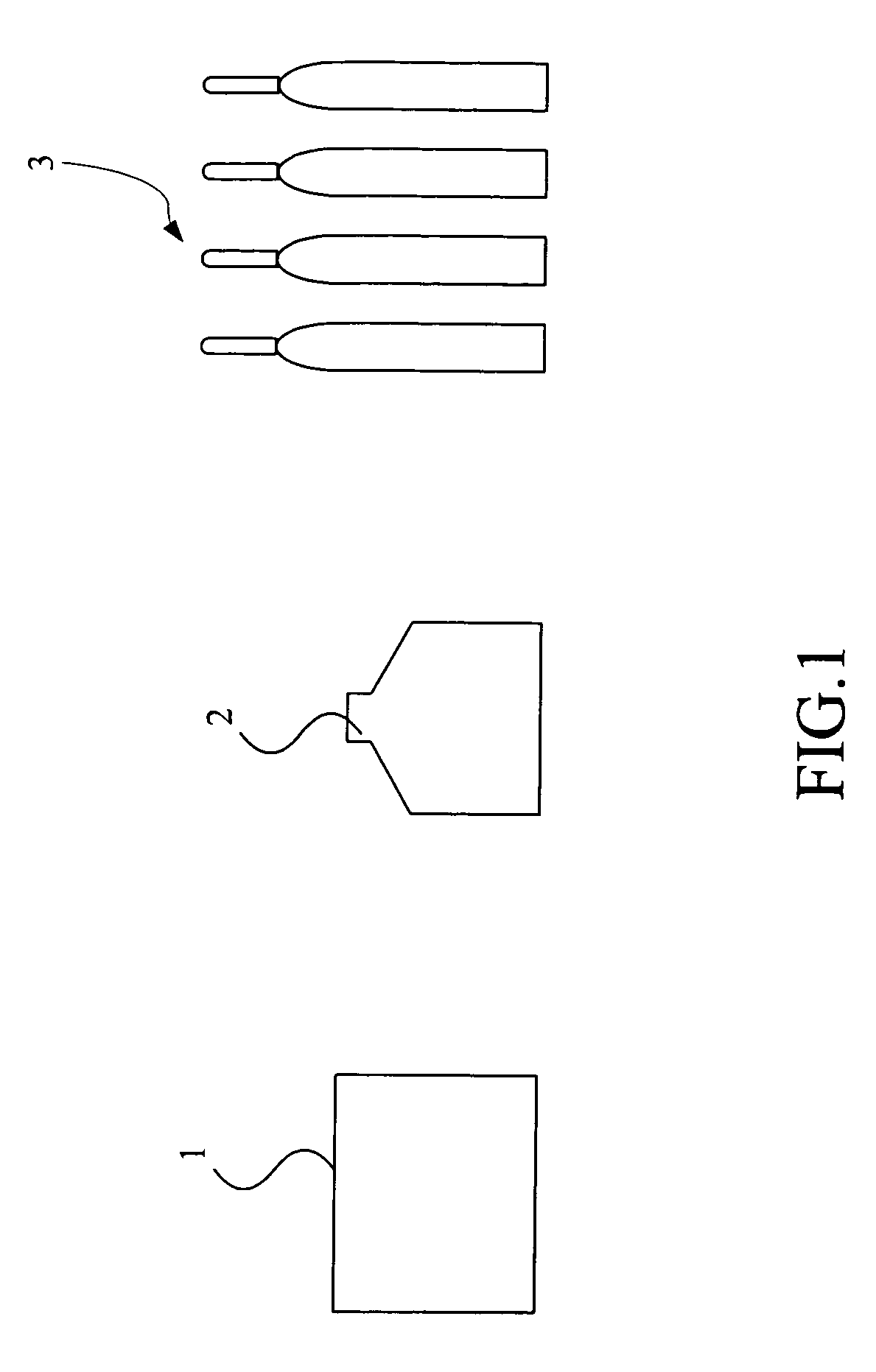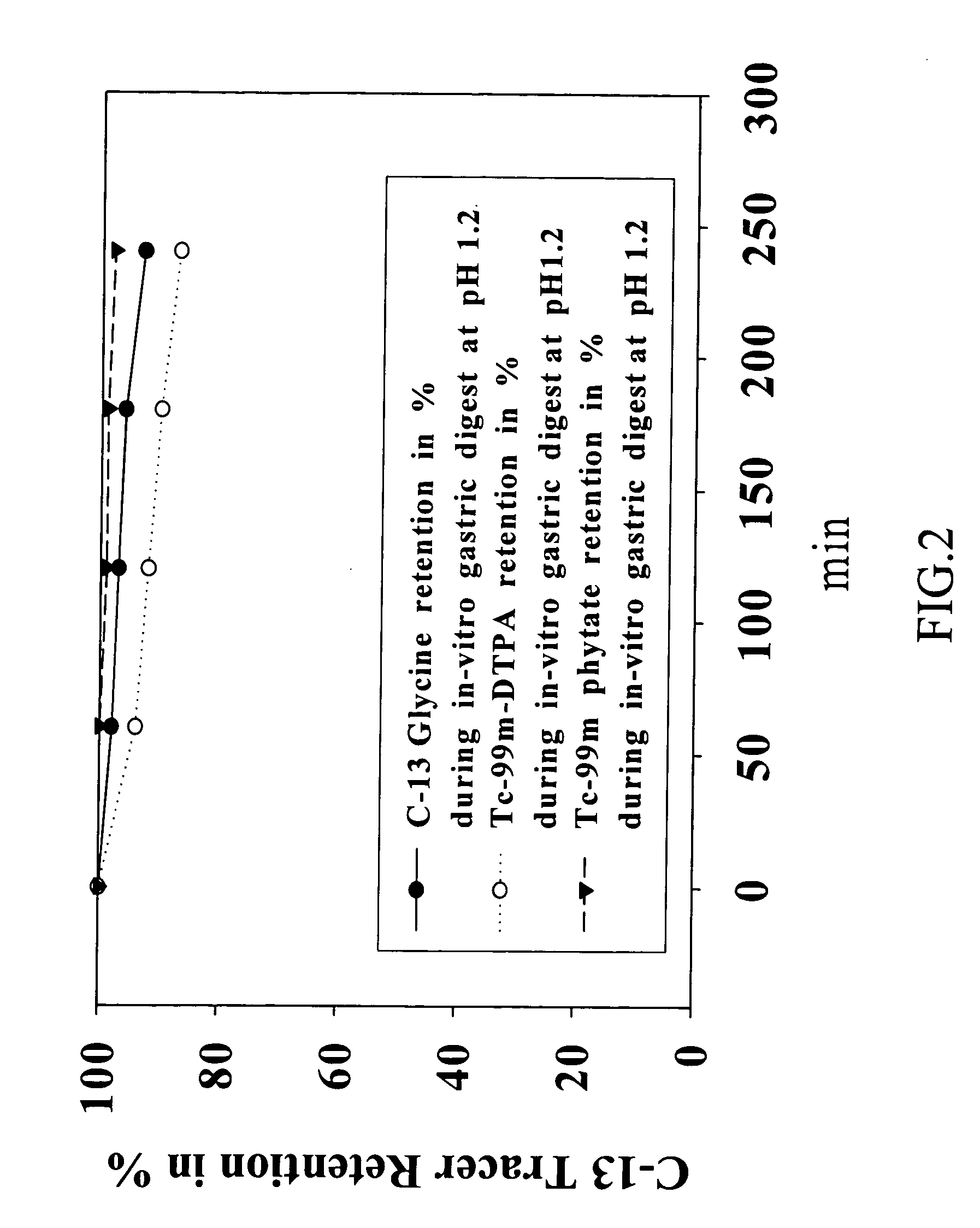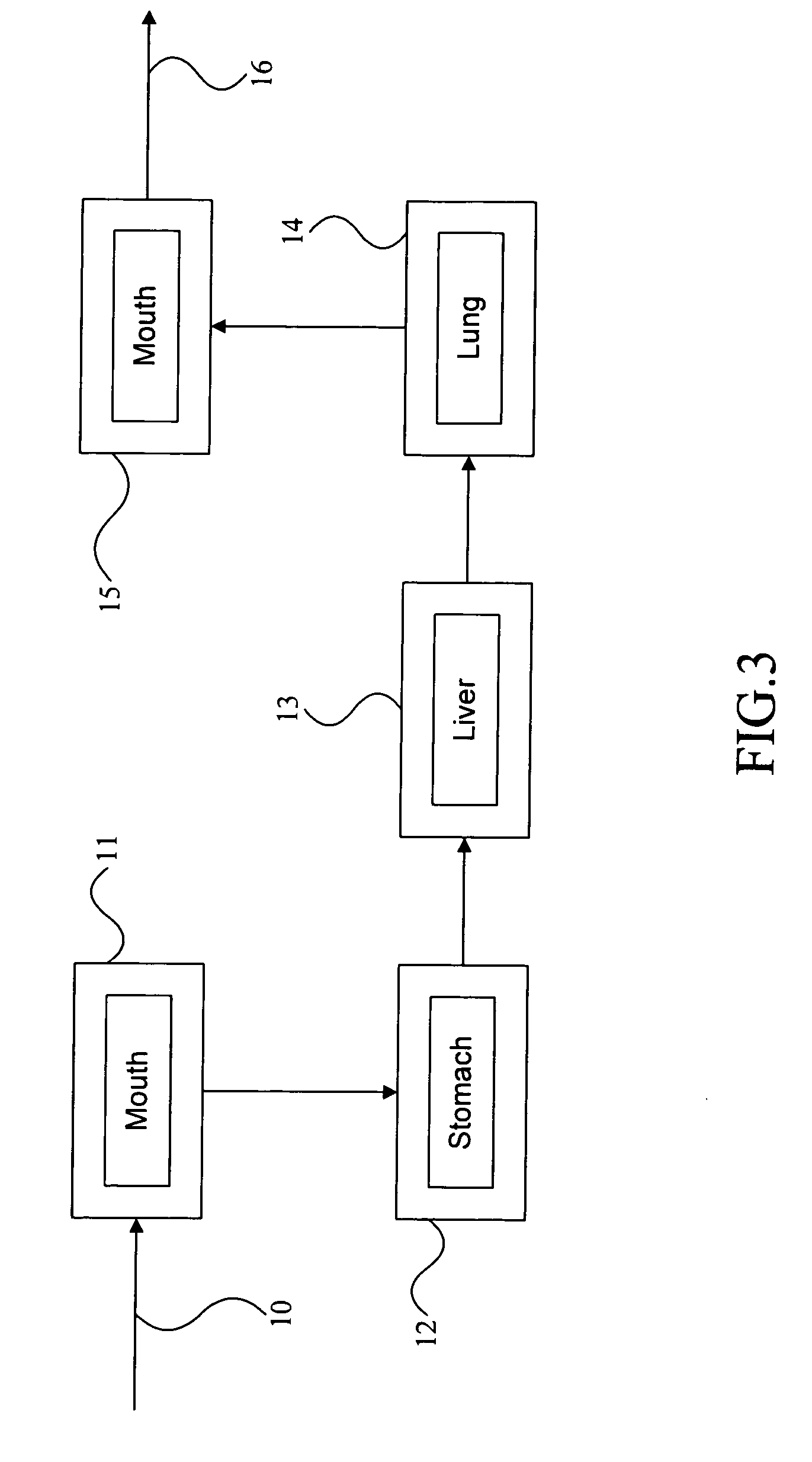Kits for gastric emptying measurement
a technology for gastric emptying and meal kits, which is applied in the field of measurement, can solve the problems of difficult quantity control, inconvenient preparation process, and more than 20% of the day coefficient variance of the measurement for an individual, and achieves the effects of small molecular weight, low cost, and fast adsorption and metabolism ra
- Summary
- Abstract
- Description
- Claims
- Application Information
AI Technical Summary
Benefits of technology
Problems solved by technology
Method used
Image
Examples
example 1
A Test Meal of a Solid Gastric Emptying Measurement
[0034] The composition of the dry mix 1 is prepared according to FIG. 9. The dry mix 1 is packed in an aluminum foil and is standardized in weight and calorie. The weight is 70±3 grams and the total calorie is 289.5±12.5 kcal. The 13C / 12C isotope ratio measured with a mass spectrometer is −25.5±0.2 per mil, which is close to the 13C / 12C isotope ratio −24.6±1.3 per mil of the exhaled human breath with a general daily diet and so indicates that the kit's formula and composition are close to a general daily diet (Gut 2002; 51, suppl III, A109.) (Amer J Clin Nutr 1980; 33, 2375.). The shelf-life for the dry mix 1 stored at a room temperature is at least one year and that for a 13C glycine is more than 5 years. The 13C glycine solid test meal is prepared by putting the dry mix 1 in a container to be mixed with a dissolving 13C glycine (50 mg (milligram) / 50 mL); and then is stirred to be battered and is instantaneously coagulated at more...
example 2
An In-Vitro Gastric Simulation
[0035] To assess the extent of 13C glycine retention in the solid phase of the test meal, a simulated gastric digest is made. A muffin is prepared as described in the section above with 100 mg of a 13C glycine mixed with the dry mix 1 and water. After chewing the test meal, it is put into a semi-permeable membrane (Spectra / PorMembrane MWCO 3,500, 54 mm×150 mm) incubated and shook with a simulated gastric juice (2 g (gram) of sodium chloride; 3.2 g of pepsin; and, 7 mL of HCl in 1000 mL, pH 1.2) at 37±2° C. having different time intervals. 5 mL aliquot of the liquid phase were removed at regular 60 min intervals, centrifuged and aliquots of the supernatants removed for C-13 glycine quantification with Liquid Chromatography / Mass Spectrometry. Results are then expressed as a percentage, P %, of the initial amount of the 13C glycine added. And, (100−P %) means an incorporation percentage of the 13C glycine in the test meal. The results (as shown in FIG. 2)...
example 3
The Stability and Suitability of a Test Meal for the Solid Gastric Emptying Measurement
[0038] To perform a gastric emptying test, a baseline sample of breath is collected using a septum capped glass tube in the morning after an overnight fast; and then is analyzed to obtain a baseline δ13C level. The blank solid test meal is prepared by putting the flour of the dry mix 1 along with water in a container; and then is stirred to be battered and is instantaneously coagulated at more than 75° C. for 5 minutes by a waffle iron to produce a blank test meal in a muffin format. The patient then administered the blank test meal along with 100 mL water within 10 minutes. The breath samples are collected with a 15-minute interval for 4 hours and analyzed using an isotope ratio mass spectrometer and are plotted into FIG. 7. The X-axis of FIG. 7 is a sampling time and the Y-axis of FIG. 7 is the 13C / 12C isotope ratio (δ13C). The curve shows the variation of the breath samples is only 0.27%. It m...
PUM
 Login to View More
Login to View More Abstract
Description
Claims
Application Information
 Login to View More
Login to View More - R&D
- Intellectual Property
- Life Sciences
- Materials
- Tech Scout
- Unparalleled Data Quality
- Higher Quality Content
- 60% Fewer Hallucinations
Browse by: Latest US Patents, China's latest patents, Technical Efficacy Thesaurus, Application Domain, Technology Topic, Popular Technical Reports.
© 2025 PatSnap. All rights reserved.Legal|Privacy policy|Modern Slavery Act Transparency Statement|Sitemap|About US| Contact US: help@patsnap.com



